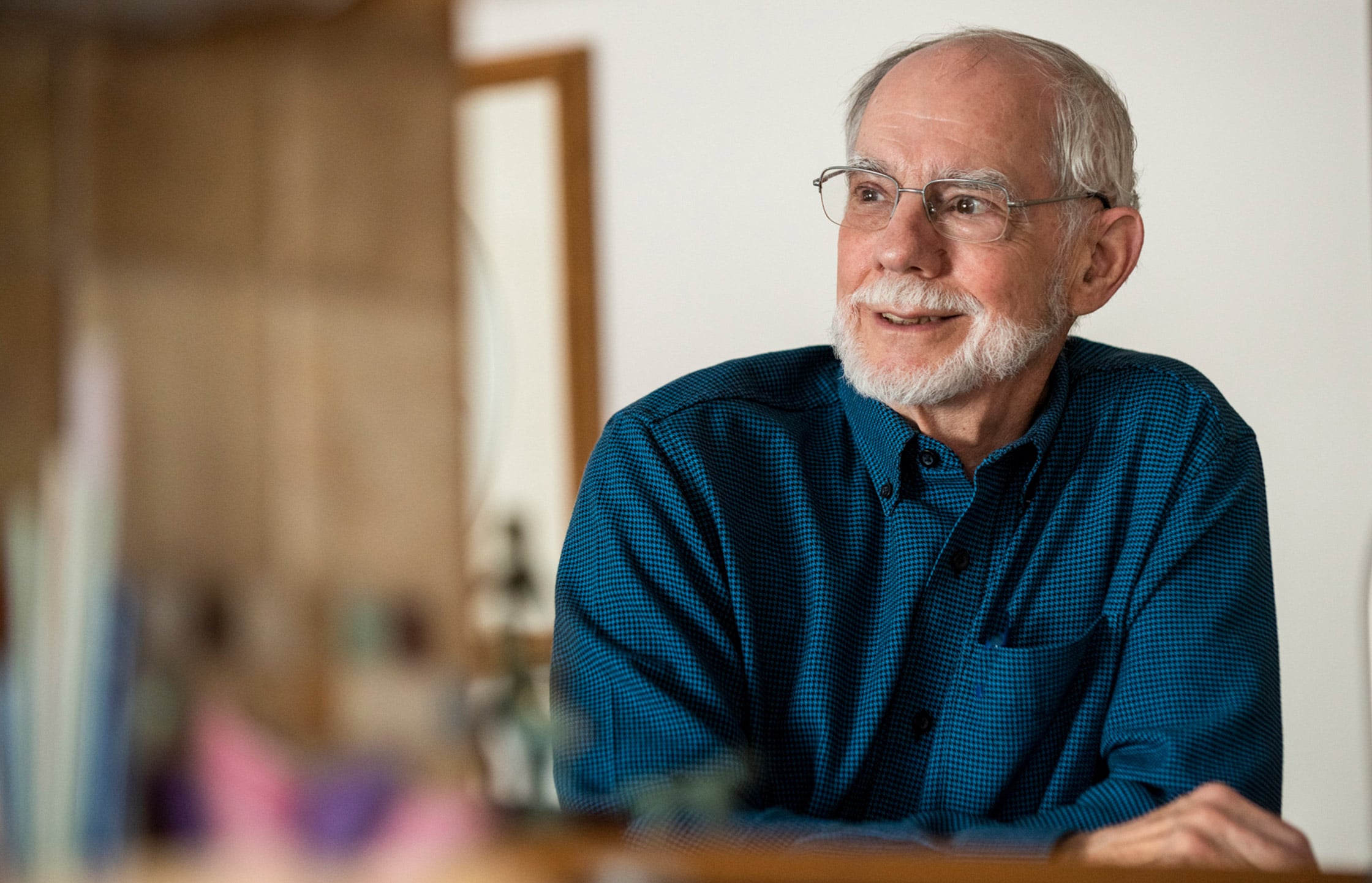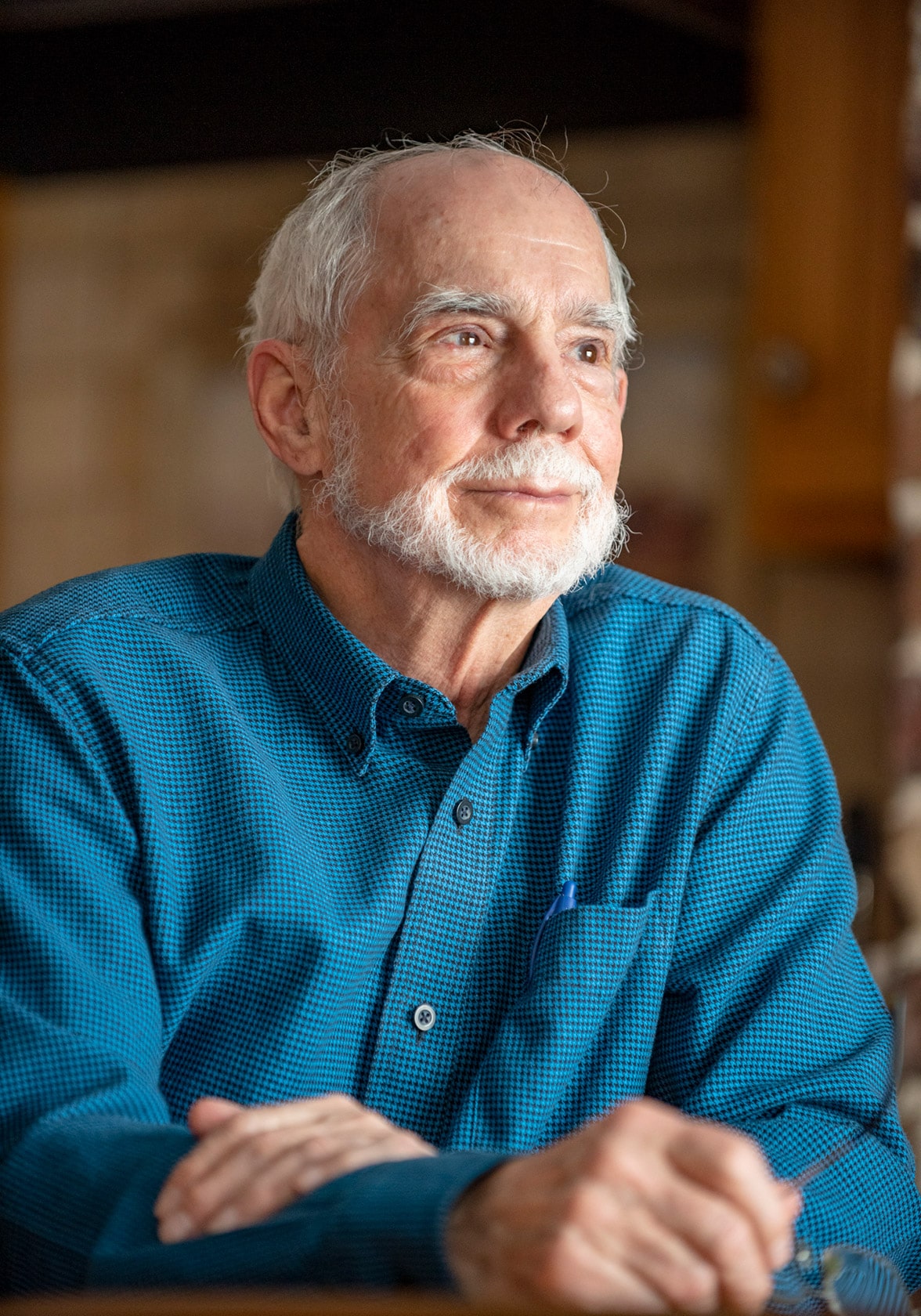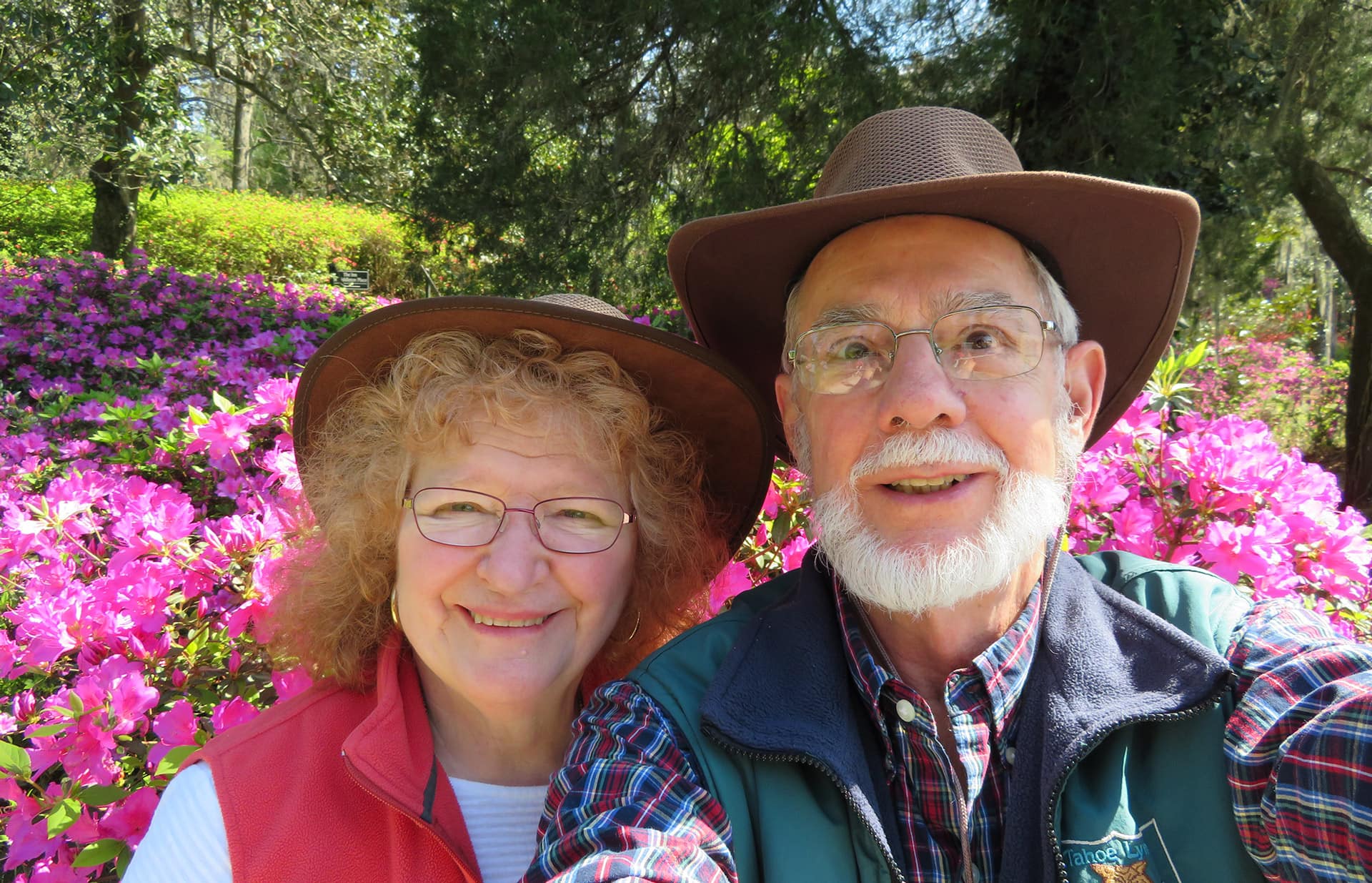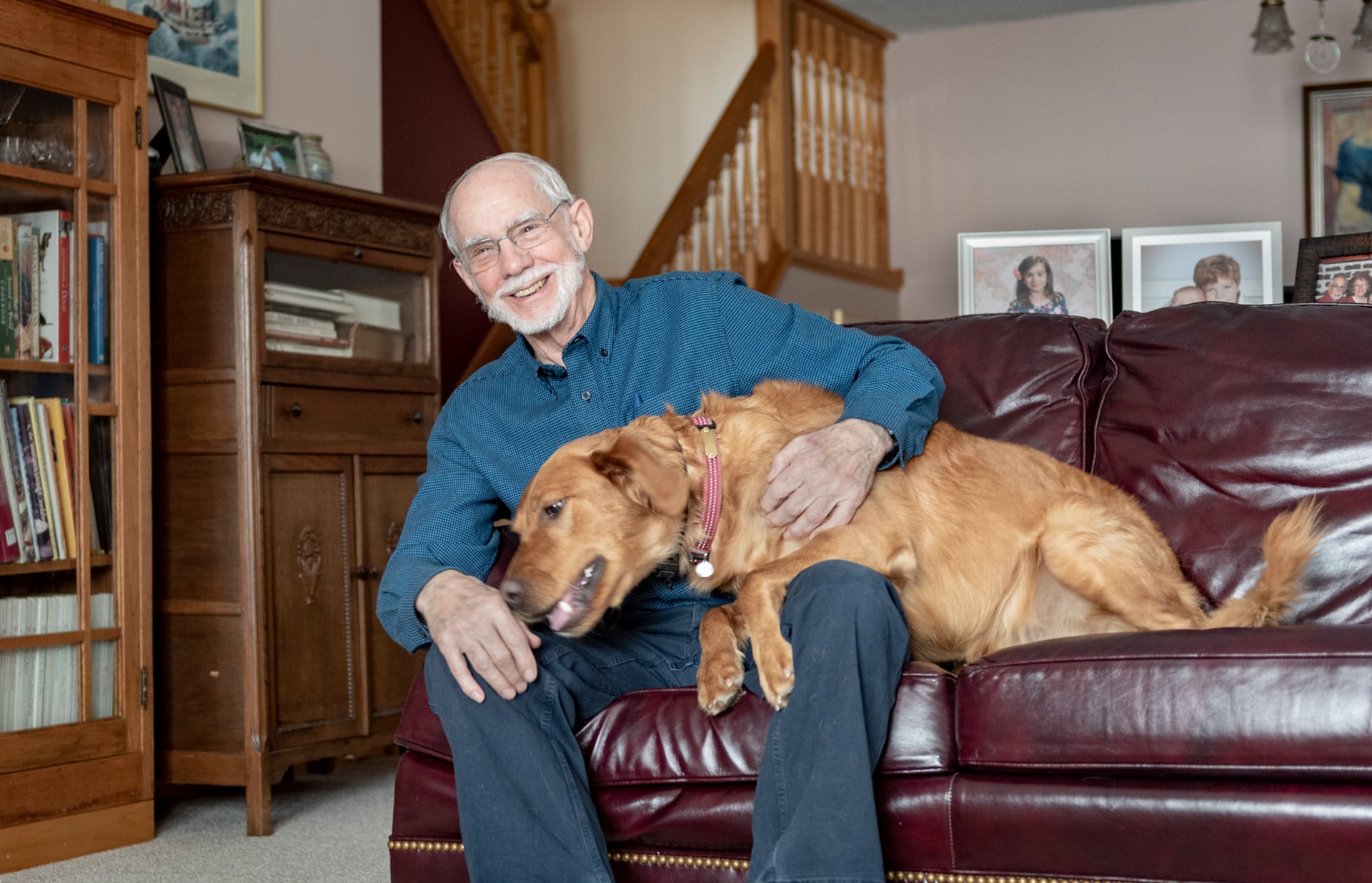How a First-of-Its-Kind Program Led to the Love of a Lifetime
A husband hopes his wife’s passion for making a difference will inspire others
By Elaine Zeinner
Photographs of Gordon Pierpont by Jamey Guy

W
hen Gordon Pierpont, Ph.D., M.D. ’73, walked into orientation for the first class of the Ph.D. to M.D. program at the University of Miami Leonard M. Miller School of Medicine, a certain redhead caught his eye.
“My classmates were already scattered around a very large auditorium, even though there weren’t many of us,” he said. “Well, luckily, I noticed some empty seats next to a red-headed gal, so I went over, sat down, and introduced myself.”
That was in July 1971 and the rest, as they say, is history. The woman he noticed was Mary Ella Mascia. Just over a year later, in September 1972, Gordon and Mary Ella were married at her family’s home in Tarrytown, New York. Together, they carved a path toward medical careers, each earning noteworthy accomplishments and building a family together. They were married for 48 years until August 2020, when Mary Ella passed away after battling glioblastoma for more than a year.
When Gordon looks back over their life together, he fondly remembers the experiences and opportunities gained at the Miller School and the supportive faculty that helped him and Mary Ella launch their careers.

An innovative path to M.D.
Gordon and Mary Ella Pierpont were part of the Miller School’s first graduating class in the Ph.D. to M.D. program, an innovative program at the time. It took students who already had a Ph.D. and offered a curriculum that spanned just two years — compared with the traditional four to become an M.D.
Gordon received a Ph.D. in physiology from the University of Wisconsin in 1970. Mary Ella earned a Ph.D. in biochemistry from the University of North Carolina a year later.

Mary Ella and Gordon Pierpont
“There was a doctor shortage at the time, so the program offered a quick and efficient way to get more doctors out in the community,” Gordon explained. “The thinking was that if you took a group of people that were highly motivated and willing to learn, you could accelerate the training and complete the program in two years instead of the usual four.”
The basic science courses were condensed while the clinical training remained as a traditional medical school curriculum. Gordon recalled it created some interesting experiences among his classmates and, sometimes, faculty.
“We did our clinical rotations with regular medical students,” he said. “It was kind of fun in some ways because we were at least four years older than most of them. In many ways, we were like colleagues with the faculty and, at the same time, peers with our fellow students. And because we were older, patients would sometimes mistake us as being one of the doctors.”
After graduating in 1973, Gordon and Mary Ella were each able to match to a residency program. But they weren’t in the same location, perhaps because many institutions weren’t familiar with the Ph.D. to M.D. program. Fortunately, they had an advocate on their side in John K. Robinson, M.D., then a dean at UM’s medical school.
“Dr. Robinson got on the phone and called a few places,” Gordon said. “He was able to explain the program and our backgrounds, and we were ultimately matched in Washington, D.C., at Georgetown University. That was just the kind of man he was. He took care of all his students in the medical school.”
That effort made an impact on both Gordon and Mary Ella. For years, they’ve supported the Miller School with donations to the John K. Robinson Fund, which now includes an honorarium in Mary Ella’s memory.
“We were both very committed to giving back to UM because of Dr. Robinson and all the faculty,” Gordon said. “We both received stipends to help offset the cost of tuition. The way we pay that back is to pay it forward and hopefully help give the same opportunities to students coming in.”
A future full of success
Both Gordon and Mary Ella went on to have very successful careers. Gordon continued his interest in physiology and became a cardiologist practicing at the Minneapolis VA Medical Center and the University of Minnesota. He wore the triple hats of cardiologist, teacher, and scientist. He wrote or contributed to more than 100 journal articles and five textbooks.

Mary Ella carved out a career in genetics and pediatric cardiology and became a well-known expert in the genetic aspects of congenital heart disease. She contributed heavily to the research and understanding of Noonan syndrome and cardiofaciocutaneous (CFC) syndrome. She even characterized a rare congenital condition, which was eventually named for her — Pierpont syndrome.
“She collaborated with a lot of people and made a significant impact on the patients, families, and scientific understanding of many congenital heart conditions,” Gordon said.
The drive to make a difference and improve others’ lives is a tradition that continues in their family. Their daughter, Rene, is a pediatric neuropsychologist. She and Mary Ella even had the opportunity to co-author eight articles published in medical literature. Their son, Dan, is a chemical engineer who works with alternate sources of energy and is currently in the solar energy division of 3M company.
All in all, Gordon feels it’s been a rewarding and fulfilling path since the Miller School.
“I wouldn’t trade it for anything else,” he said.
About the John K. Robinson Fund
John K. Robinson, M.D., was the associate dean for student affairs at the University of Miami Miller School of Medicine for many years. He wore several different hats during his tenure, ranging from admissions interviews to counseling students through personal problems. The John K. Robinson Fund was created to honor his legacy and support medical student grants and scholarships. Donations support medical scholarships and travel grants for deserving students who present their research at national conferences. The success of this worthy endeavor relies entirely on your generosity.
If you’d like to support the John K. Robinson Fund, you may do so online at miami.edu/johnkrobinson.![]()
Read about Mary Pierpont’s impact and contributions here.


